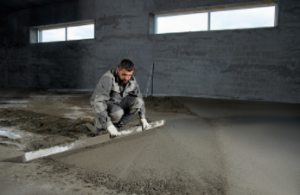Concrete is a durable construction material made of aggregate (ground) aggregate, cement, and sometimes water or other substances in the right amounts. After its formation, concrete forms at the place where it is being formed and remains there until mixed with other materials to create the concrete material. After this, concrete hardens and becomes called hardened concrete.
 It is further divided into concrete and non-concrete. Concrete can be used for different purposes such as floors, foundations, dams, parking meters, slabs and much more. However, due to the excessive usage and weathering, concrete needs to be repaired periodically.
It is further divided into concrete and non-concrete. Concrete can be used for different purposes such as floors, foundations, dams, parking meters, slabs and much more. However, due to the excessive usage and weathering, concrete needs to be repaired periodically.
Batching: The process of measured the mixing of different concrete materials for the production of concrete, including coarse aggregate, sand, cement and water for the building, is called batching. Various types of equipment like mixer trucks, rollers, mixers, pressure washers, and heaters are used. This enables the preparation of the desired concrete product. Concrete strength increases after the hardened form have been formed into the desired shape.
Concrete strength increases because of the fine aggregate and fine-grained water content and because it contains silica. High temperature, pressure and weathering are some of the factors responsible for the formation of hardened concrete. The significant advantage of using Concreting Adelaide is that it gives consistent thickness and consistent wall thickness regardless of the manufacturing process and location. It is also preferred in areas where sunshine, heat or cold play a significant role in climatic conditions. Concrete is primarily used for construction purposes because it offers excellent resistance to damage, acts as a superior noise and fire barrier, and can resist extreme weather conditions.
Concreting Adelaide is not only used for its strength but also for its aesthetic value. It can be used both inside and outside for residential and commercial projects. The essential qualities required in concrete for building construction are its strength and flexibility, ability to resist extreme temperatures and pressure resistance. It is essential to control quality during the manufacturing process to produce high-quality concrete products. It is also necessary to control the chemical composition of the concreting materials used for the same reason.
During construction, large quantities of concrete have to be poured into the excavations. This is where the need for quality control arises. The Concrete Quality Control Processes can be in various forms.
Often a concreted or prepared surface is required for drainage. One such method is the use of wet screening, which is also known as mass formed concreting. In mass formed concrete, the fine crystalline material is extruded through a tube in the shape of the desired concreted surface. The delicate crystalline material is then deposited in the excavated area through the use of a hose.
An efficient and convenient way of producing concreted concrete materials is batching or vibratory concreting. A batch of concrete materials is produced in batching by pouring the concrete mixture directly into the mould from a batch. To increase the speed and efficiency of batching, vibratory machines are sometimes used. Vibration is also necessary because fine aggregates tend to settle and thus may require a considerable amount of grinding before release.
Another critical thing to note is that the concrete batching and vibratory concreting processes are pretty messy. For this reason, it is highly recommended to hire professional converters who have experience in laying concrete. The significant advantage of hiring professionals is that they would ensure that the surfaces are adequately levelled and therefore do not allow settling. Following these simple steps in laying concrete steps involved in concreting, the process becomes a more effortless and quicker task. Once the surfaces are correctly set and levelled, the rest is easy.
Visit adelaidecityconcreting.com.au for more information.